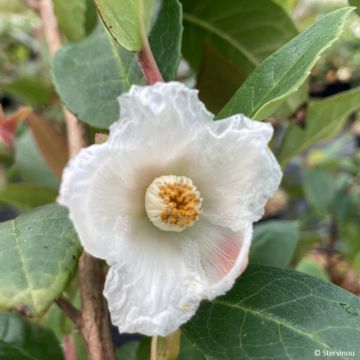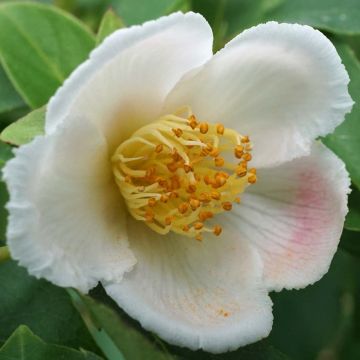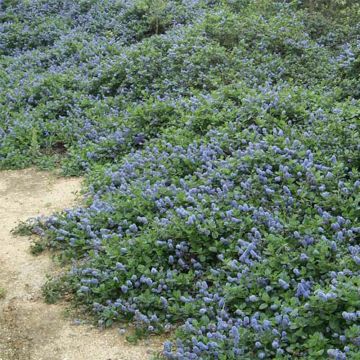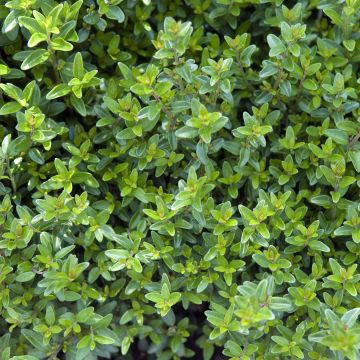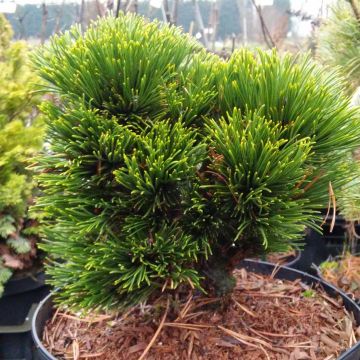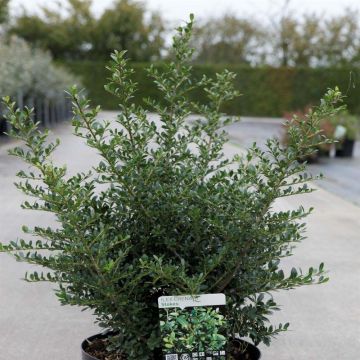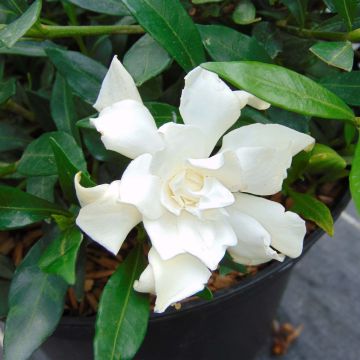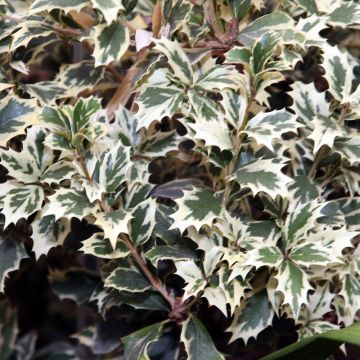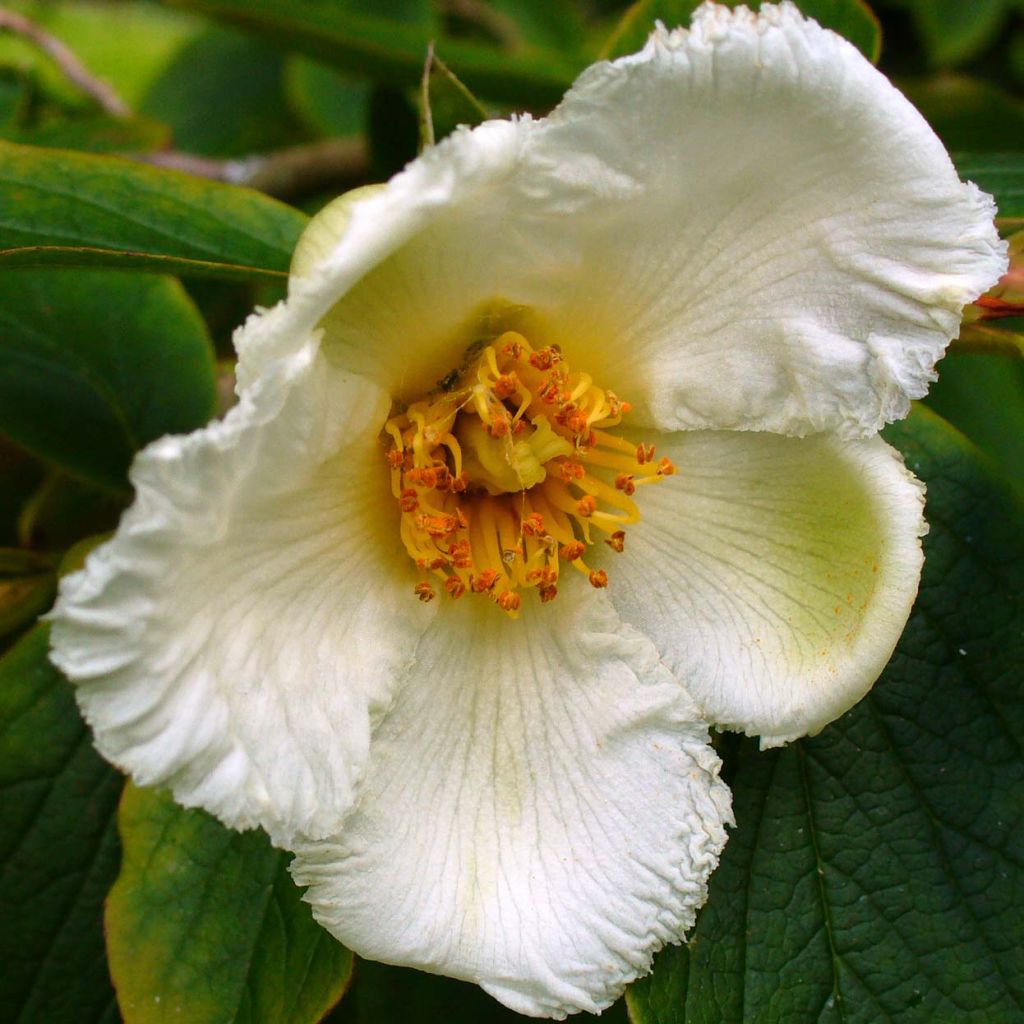

Stewartia pseudocamellia Koreana
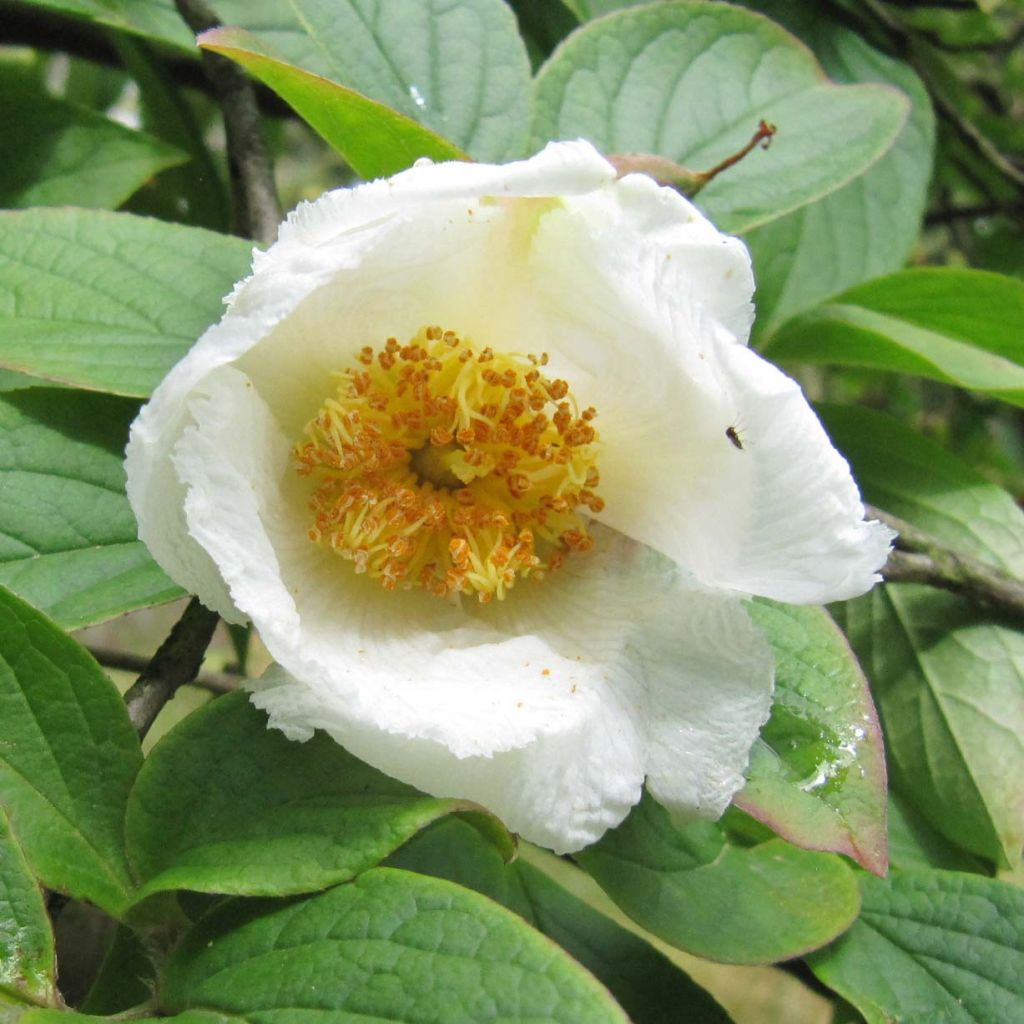

Stewartia pseudocamellia Koreana
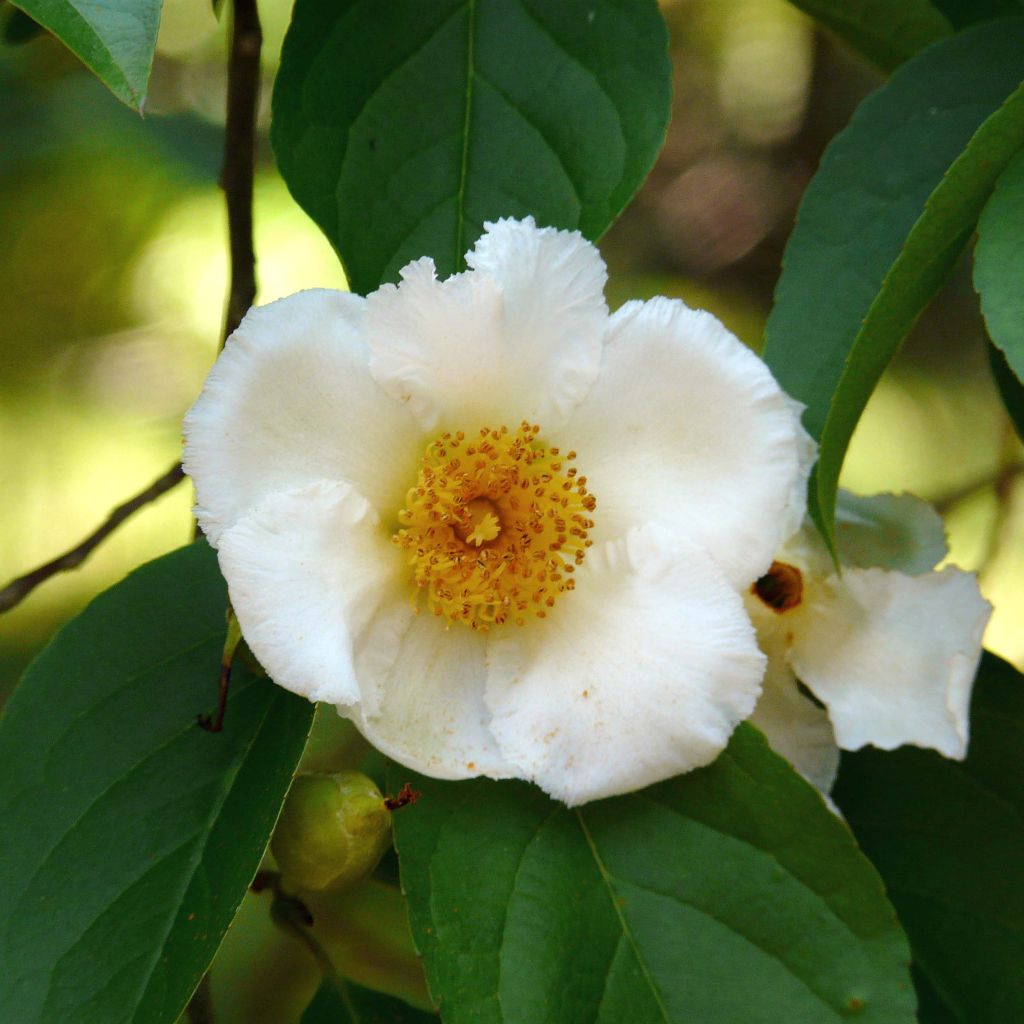

Stewartia pseudocamellia Koreana
Stewartia pseudocamellia Koreana
Stewartia pseudocamellia Koreana
Japanese Stewartia, Korean Stewartia
I have had one for about 15 years: it is magnificent in flowering, which spreads throughout the summer, the flowers fall too quickly, the trunk has a beautiful chocolate hue that exfoliates.
Robert, 13/01/2020
Special offer!
Receive a €20 voucher for any order over €90 (excluding delivery costs, credit notes, and plastic-free options)!
1- Add your favorite plants to your cart.
2- Once you have reached €90, confirm your order (you can even choose the delivery date!).
3- As soon as your order is shipped, you will receive an email containing your voucher code, valid for 3 months (90 days).
Your voucher is unique and can only be used once, for any order with a minimum value of €20, excluding delivery costs.
Can be combined with other current offers, non-divisible and non-refundable.
Why not try an alternative variety in stock?
View all →This plant carries a 24 months recovery warranty
More information
We guarantee the quality of our plants for a full growing cycle, and will replace at our expense any plant that fails to recover under normal climatic and planting conditions.

Would this plant suit my garden?
Set up your Plantfit profile →
Description
The Stewartia pseudocamellia 'Koreana', sometimes nicknamed Stewartia false camellia, is a Korean cousin of the Japanese Stewartia monodelpha, related to camellias. More than just a large bush, after many years it forms a true small tree with many advantages: a multicoloured and decorative bark, a fairly long summer flowering resembling large white roses with a golden heart and elegant foliage that turns gorgeous autumnal colours before falling. Hardier than its Japanese cousin and most camellias, this Stewartia appreciates cool environments and neutral to acidic soils, but tolerates sunny exposures better if the soil remains moist. Its moderate development and slow growth allow it to fit into a garden of modest size.
The Stewartias belong to the family of tea plants. While the type species, the false camellia Stewartia, is native to the wooded mountains of Japan, the cultivar 'Koreana', as its name suggests, was selected in Korea. This plant forms a small tree with an open habit, a spread-out and airy pyramidal crown, then oval over time. Its growth is slow, reaching approximately 10 m (32 ft 10 in) in height and 6-7 m (19 ft 8 in-23 ft) in width under favorable climates, but it usually reaches 6 m (19 ft 8 in) in height and 4 m (13 ft 1 in) in width. Its smooth, brown to grey bark lightly exfoliates in thin flakes, revealing a "new skin" of beige, orange, cinnamon, or purple-brown colour. All these shades form a unique and decorative ensemble. The deciduous leaves are fairly dark green until late summer, then they take on beautiful orange to red-orange hues before falling. They are entire, ovate to obovate leaves, 3 to 9 cm (1.2 to 3.5 in) long, strongly veined and finely toothed at the edges. The flowering of this Stewartia generally begins in June and often continues for more than 2 months, until August. The solitary flowers appear in the axils of the leaves. Shaped like slightly open cups, 5 to 7 cm (2 to 2.8 in) wide, they consist of pure white petals surrounding a large heart of yellow stamens. This nectar-rich flowering gives way to numerous curious fruits: woody, brown, and hooked capsules measuring approximately 2 cm (0.8 in) in length.
A truly ornamental bush in rather humid climates, even cold in winter, the Stewartia pseudocamellia is easier to acclimate than most camellias as long as it can be provided with a neutral or slightly acidic soil that remains moist. It can be planted in the garden as a standalone specimen, or combined with other plants that prefer non-limestone soil (Rhododendron, azaleas, Hydrangea, Hamamelis) in a flowering hedge. It also deserves a clear location, slightly away from other plants so that it can be enjoyed throughout the year: at the entrance of the garden, near the house, or along a path. You can dress its base with Japanese grass, ferns, or autumn bulbs, such as colchicums or Naples cyclamens. In soil close to neutrality, it can also accompany the Venus flytrap tree, Hamamelis, Clethra barbinervis, and Fothergilla, charming shrubs that are not always considered.
Report an error about the product description
Stewartia pseudocamellia Koreana in pictures
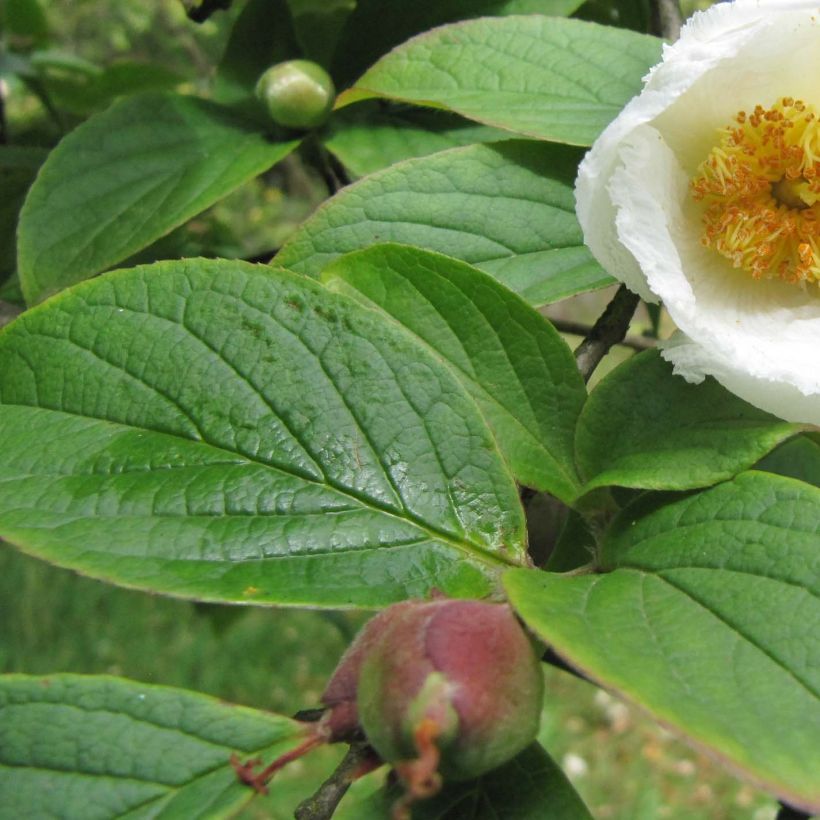

Plant habit
Flowering
Foliage
Botanical data
Stewartia
pseudocamellia
Koreana
Theaceae
Japanese Stewartia, Korean Stewartia
Cultivar or hybrid
Other Stewartia
View all →Planting and care
The Stewartia pseudocamellia 'Koreana' is a bush that ideally prefers acidic to neutral soil, free of limestone, although it can tolerate neutral or slightly limestone soils. It appreciates moist but not waterlogged, humus-rich but well-drained, light and rather fertile soils. A non-limestone loamy soil, or sandy soil, will also be suitable. Choose a sunny or partially shaded exposure. However, you can grow it in full sun, but the roots must remain cool. If these conditions are not met, it will struggle to grow and will never reach its full potential. It should be sheltered from cold and drying winds, as young plants are more sensitive to severe frosts, as are potted plants. The bush should not be planted too deeply, the top of the root ball should be covered with 3 cm (1.2 in) of soil. In winter, cover it with a 5 to 7 cm (2 to 2.8 in) thick mound of leaf compost and shredded bark. During dry periods, water to maintain soil moisture, as this bush fears drought and heatwaves.
Planting period
Intended location
Care
-
, onOrder confirmed
Reply from on Promesse de fleurs
Similar products
Haven't found what you were looking for?
Hardiness is the lowest winter temperature a plant can endure without suffering serious damage or even dying. However, hardiness is affected by location (a sheltered area, such as a patio), protection (winter cover) and soil type (hardiness is improved by well-drained soil).

Photo Sharing Terms & Conditions
In order to encourage gardeners to interact and share their experiences, Promesse de fleurs offers various media enabling content to be uploaded onto its Site - in particular via the ‘Photo sharing’ module.
The User agrees to refrain from:
- Posting any content that is illegal, prejudicial, insulting, racist, inciteful to hatred, revisionist, contrary to public decency, that infringes on privacy or on the privacy rights of third parties, in particular the publicity rights of persons and goods, intellectual property rights, or the right to privacy.
- Submitting content on behalf of a third party;
- Impersonate the identity of a third party and/or publish any personal information about a third party;
In general, the User undertakes to refrain from any unethical behaviour.
All Content (in particular text, comments, files, images, photos, videos, creative works, etc.), which may be subject to property or intellectual property rights, image or other private rights, shall remain the property of the User, subject to the limited rights granted by the terms of the licence granted by Promesse de fleurs as stated below. Users are at liberty to publish or not to publish such Content on the Site, notably via the ‘Photo Sharing’ facility, and accept that this Content shall be made public and freely accessible, notably on the Internet.
Users further acknowledge, undertake to have ,and guarantee that they hold all necessary rights and permissions to publish such material on the Site, in particular with regard to the legislation in force pertaining to any privacy, property, intellectual property, image, or contractual rights, or rights of any other nature. By publishing such Content on the Site, Users acknowledge accepting full liability as publishers of the Content within the meaning of the law, and grant Promesse de fleurs, free of charge, an inclusive, worldwide licence for the said Content for the entire duration of its publication, including all reproduction, representation, up/downloading, displaying, performing, transmission, and storage rights.
Users also grant permission for their name to be linked to the Content and accept that this link may not always be made available.
By engaging in posting material, Users consent to their Content becoming automatically accessible on the Internet, in particular on other sites and/or blogs and/or web pages of the Promesse de fleurs site, including in particular social pages and the Promesse de fleurs catalogue.
Users may secure the removal of entrusted content free of charge by issuing a simple request via our contact form.
The flowering period indicated on our website applies to countries and regions located in USDA zone 8 (France, the United Kingdom, Ireland, the Netherlands, etc.)
It will vary according to where you live:
- In zones 9 to 10 (Italy, Spain, Greece, etc.), flowering will occur about 2 to 4 weeks earlier.
- In zones 6 to 7 (Germany, Poland, Slovenia, and lower mountainous regions), flowering will be delayed by 2 to 3 weeks.
- In zone 5 (Central Europe, Scandinavia), blooming will be delayed by 3 to 5 weeks.
In temperate climates, pruning of spring-flowering shrubs (forsythia, spireas, etc.) should be done just after flowering.
Pruning of summer-flowering shrubs (Indian Lilac, Perovskia, etc.) can be done in winter or spring.
In cold regions as well as with frost-sensitive plants, avoid pruning too early when severe frosts may still occur.
The planting period indicated on our website applies to countries and regions located in USDA zone 8 (France, United Kingdom, Ireland, Netherlands).
It will vary according to where you live:
- In Mediterranean zones (Marseille, Madrid, Milan, etc.), autumn and winter are the best planting periods.
- In continental zones (Strasbourg, Munich, Vienna, etc.), delay planting by 2 to 3 weeks in spring and bring it forward by 2 to 4 weeks in autumn.
- In mountainous regions (the Alps, Pyrenees, Carpathians, etc.), it is best to plant in late spring (May-June) or late summer (August-September).
The harvesting period indicated on our website applies to countries and regions in USDA zone 8 (France, England, Ireland, the Netherlands).
In colder areas (Scandinavia, Poland, Austria...) fruit and vegetable harvests are likely to be delayed by 3-4 weeks.
In warmer areas (Italy, Spain, Greece, etc.), harvesting will probably take place earlier, depending on weather conditions.
The sowing periods indicated on our website apply to countries and regions within USDA Zone 8 (France, UK, Ireland, Netherlands).
In colder areas (Scandinavia, Poland, Austria...), delay any outdoor sowing by 3-4 weeks, or sow under glass.
In warmer climes (Italy, Spain, Greece, etc.), bring outdoor sowing forward by a few weeks.






























